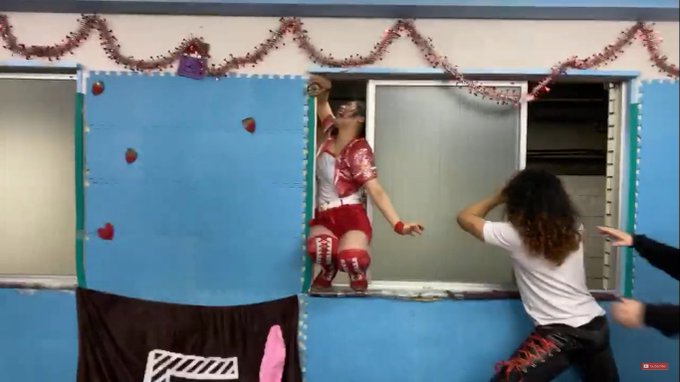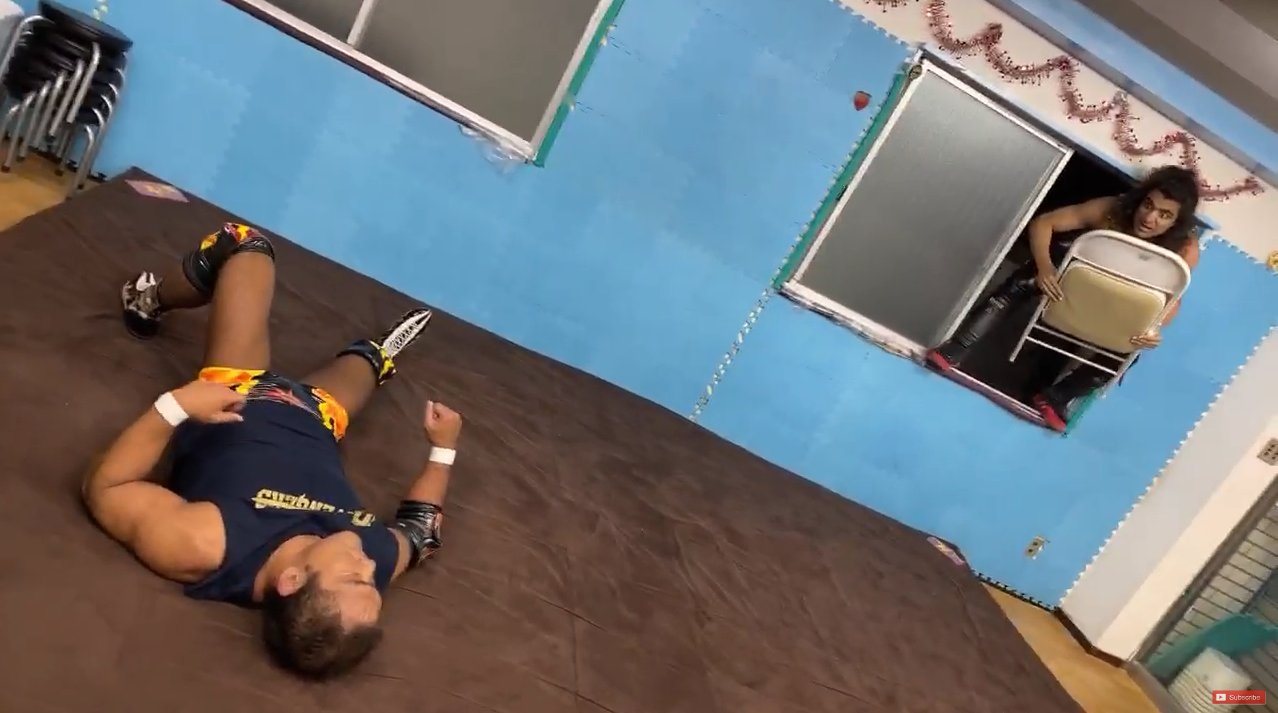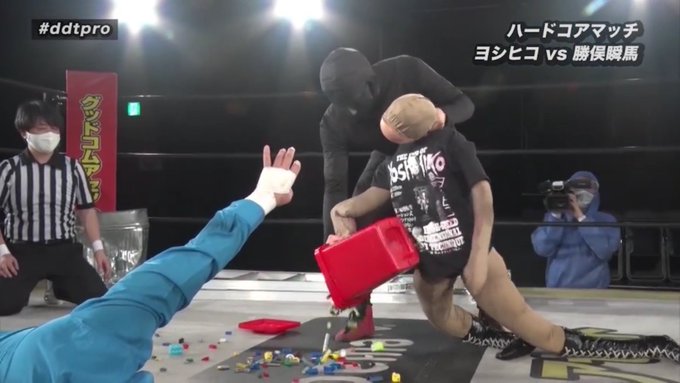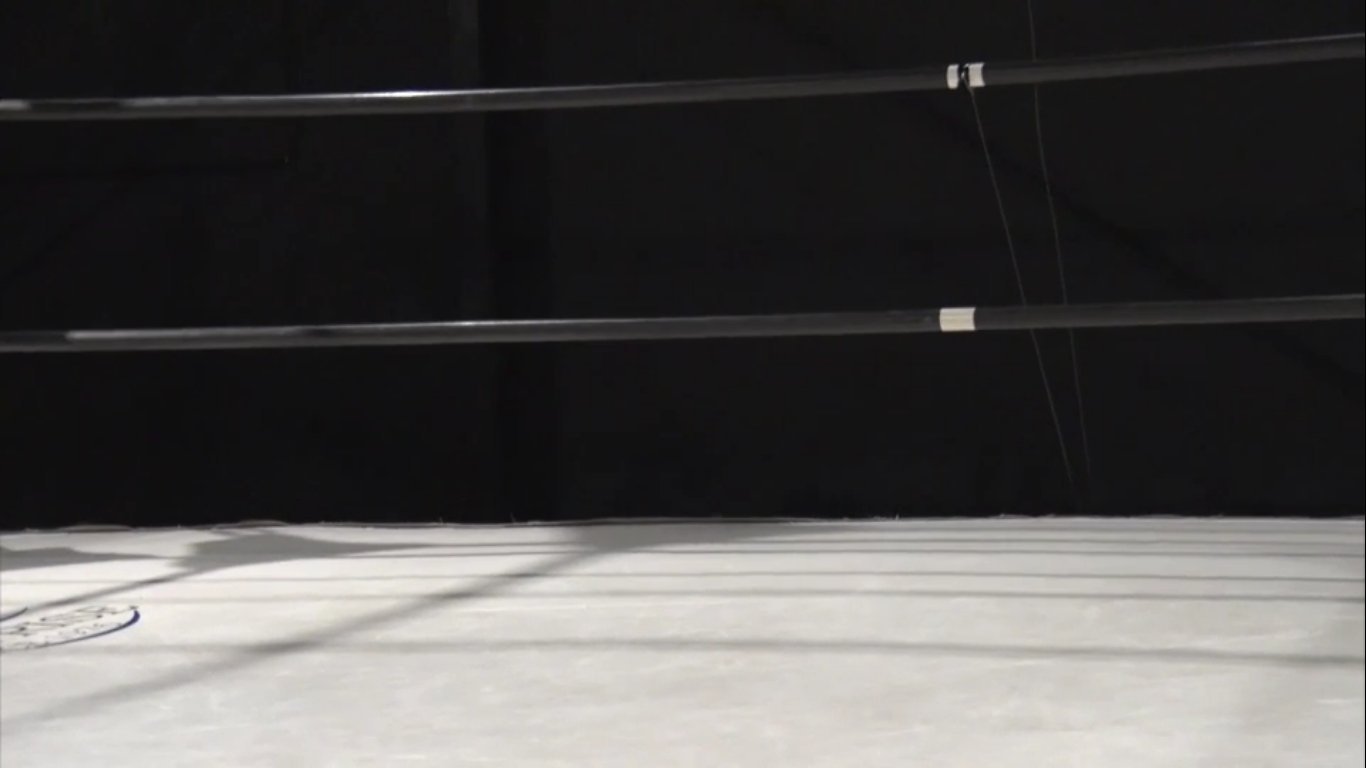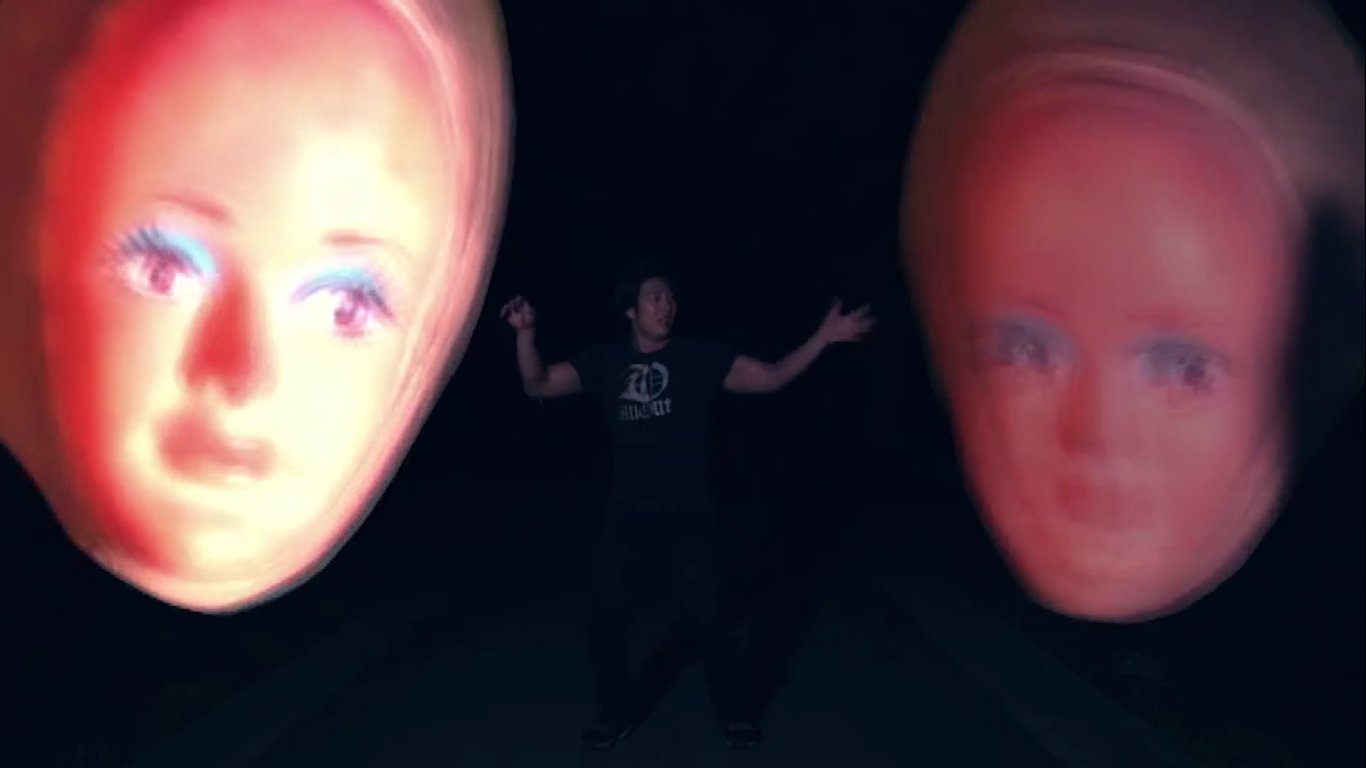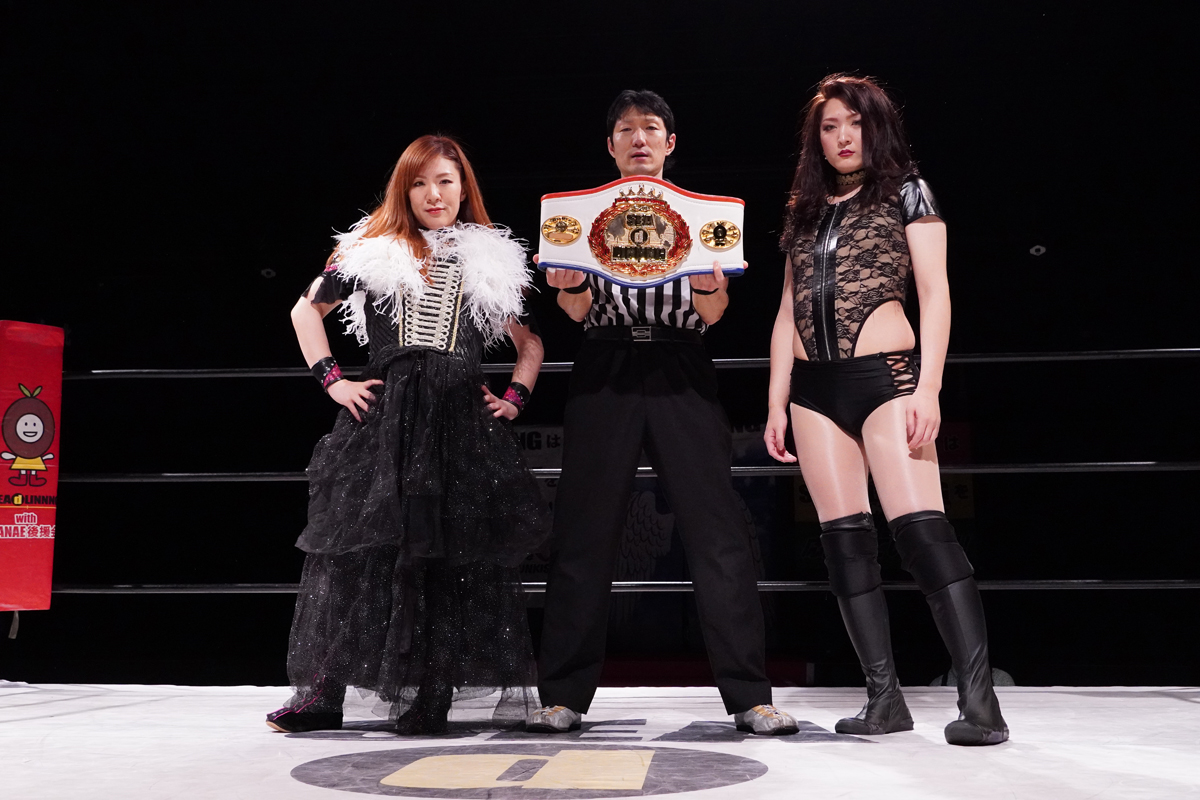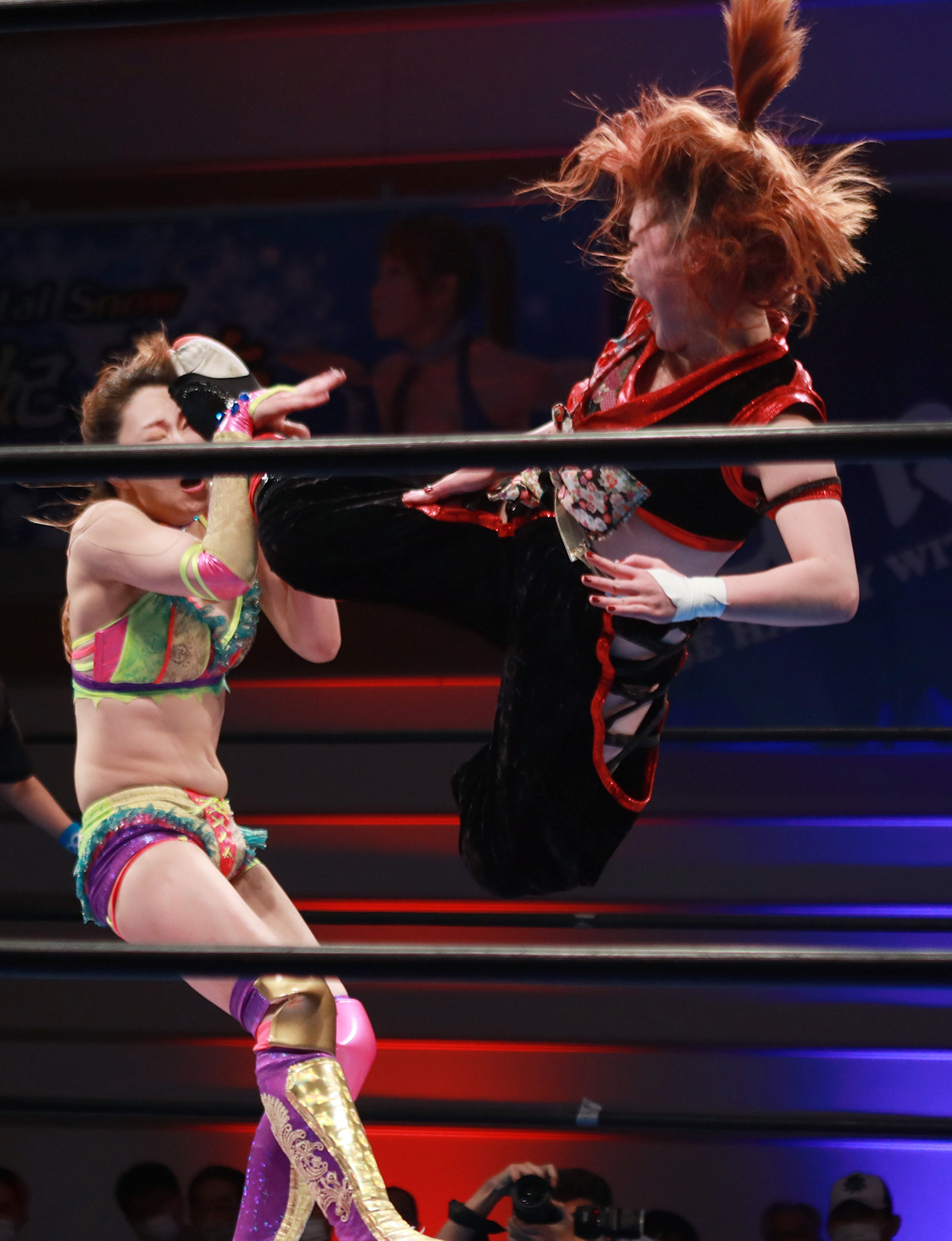An Incomplete Maintainer’s Guide to the Best of Pro Wrestling 2020 Q2
Introduction: For Hana
Image courtesy Weekly Pro Wrestling
Sitting here now, you don’t want to write this. You shouldn’t have had to write this.
You can’t say for sure, who ever really can, but you’ll probably never forget the conditions of your first hearing the news. A walk along a canal towpath busy with brightly-painted barges, hot sun, dusty fading evening light, a clutch of Deliveroo riders stood outside the restaurant discussing their tips. The first DM that makes your heart sink beneath the pavement, the realisation you’ve just missed seeing the images, the tweet from a source, who knows if they’re reliable or not, suggesting it might be ok – all this happens in the time it takes for your takeaway pizza to be called for collection. The community – your Twitter feed has never looked more like a community than it did these 24 hours – rallying round to support her and support each other and support anyone in earshot who might just find their mental health snagging on all of this. A Euro 96 match watched in sync with G – a friend in need is a friend indeed. Going to bed and waking up with an ominous feeling but still not feeling prepared for the tweet from an unknown account that confirms the worst, still not feeling prepared for the news hours, days after it’s been delivered. Friends check in, the support is almost overwhelming in fact. Everyone is overwhelmed. The first time you cry is when, watching Choco Pro in the bath (a go-to luxury for troubled times), Akki tells the story of how Asuka came to be in the main event today – Sakura phoned her up, and before she’d even got a word out Asuka had answered in the affirmative. Yes, the show must go on. Mei hits Asuka in the head with a kendo stick and you laugh. Wrestling is good. The community is good.
What wrestlers are doing when they do their work is creating an alternative universe, and what we’re doing as fans when we go about our daily business of following them online is making a home in that universe. Wrestlers, their quirks, the things they say and the things they do become items of furniture that brighten our dwellings and help us feel comfy. A wrestler can go on a long hiatus due to injury or retire and mostly disappear from view and they’re still there with you in the room. There’s never enough time to watch it all anyway; there’s so much to hunker down in. So even though it’s been two months since you saw her wrestle – time enough to achieve superstardom and be forgotten in the easy-come-easy-go world of showbiz, or so it goes – it’s not like she ever really faded from view, and in any case she’s been there on the YouTube streams like all the rest, and in any case if you were going to pick one wrestler whose radiant image you could guarantee showing up on the the timeline day in day out even in a time of total content drought, you’d probably pick her.
In the weeks following, you’ll see her picture a million times, and in at least half of those instances it will take your brain a moment or two to adjust to why you’re seeing it.
This shouldn’t have been her story. The battles with Iwata. The way she took the fight to Minoru Suzuki at her mum’s retirement show. The way she grew into herself as a member of Oedo Tai – the bratty early promos, the clash with Kagetsu at the 2017 5 Star Grand Prix that’s still one of your favourite matches in the history of that tournament, the intensity she brought to the feud with Tam in 2018 that did as much as anything to establish Tam as a top star in the company. The way Tokyo Cyber Squad felt like the most vital thing in wrestling for a little while, and the way she felt like no other group leader in all of wrestling – uniquely self-possessed, uniquely insecure, uniquely serious and uniquely happy-go-lucky. An increasingly perfect version of herself. The 2019 Grand Prix win and the 2020 Tokyo Dome appearance as further stepping stones to a career of great longevity and impact – the star that, through the special care and attention she lavished on her younger female fans, brought them back to joshi puroresu in their droves, one TCS Girl at a time, the absolutely magnetic and universally-loved icon that brought back the glory days. In a fair and just world, which may be where she is right now, that’s what her story would have been.
There are a lot of things in pro wrestling that need changing. What Hana gave to us was not one of them. We loved her and we will miss her.
Rest in Peace Hana Kimura, 1997-2020
⬛⬛⬛⬛⬛⬛⬛⬛⬛⬛⬛⬛⬛?⬛⬛⬛⬛⬛⬛⬛⬛⬛⬛⬛⬛⬛
April
Mei Suruga & Ryo Mizunami v Mitsuru Konno & Baliyan Akki
1 April, Choco Pro, Ichigaya Chocolate Square
Everything is in a very different place now than it was two months ago, and that includes wrestling. In Japan, wrestling has already gone through three distinct waves since the outbreak of COVID-19: the first wave at the start of March, when companies began running empty arena shows as a precaution (see: No People Gate and the TJPW dojo shows); the second wave a couple of weeks into the month where everything seemed to go back to normal for a bit (see: the Cinderella Tournament and Ice Ribbon’s big Korakuen show); and the third wave, which we’re in now, where the government got a little stricter and companies began cancelling shows en masse, or moving them back to empty arenas where appropriate (see: the NOAH show with Shiozaki/Fujita).
Emi Sakura’s Choco Pro initiative is by far and away the brightest shining light of this third wave. There are live streams every day – even when it’s just Mei, Akki and pals streaming themselves watching back over old matches, it’s still a fun thing to tune in to and gives some structure to days spent under lockdown: here’s an hour or two set aside from the endless flow of time spent indoors which you can share with other people across the globe. And then there are the actual live Ichigaya shows – this was the second one, after the one headlined by Minoru Suzuki and Baliyan Akki at the weekend – which really feel like a care package, a warm embrace and a beautiful, spontaneous response to a crisis. I suppose we can surmise that matches like this one – and the other two matches on the show, singles contests between Yuna Mizumori and Antonio Honda, and Emi Sakura and An Chamu – might have been scheduled to take place at the coming weekend’s Ichigaya shows if things were different, but watching the show live it felt like they were being laid on specifically with remote viewers in mind, a little offering to help us all through the day.
All three matches didn’t need an in-situ audience to hit high levels of Gatoh Move magic, but what made this main event stand out in particular was how generously future-oriented it seemed: we’re not just in a holding pattern here, even though that would be fine in the circumstances, but rather the seeds are being planted for a sporting rivalry between Mitsuru Konno and Ryo Mizunami which could blossom into something truly spectacular once this all blows over (or, if the intensity of the in-ring work on display here is anything to go by, maybe even before it blows over). There was the expected level of genius spots here – Mei and Akki taking turns at trapping each other between the sliding window and its frame was a notable highlight – but it was those short sequences involving Konno and Mizunami which best showed Choco Pro as a kind of incubator, keeping pro wrestling passion alive during this period of dormancy so that somewhere down the line it can explode onto bigger stages once again.
4 April, WWE, [Location undisclosed]
A match which belongs right up there alongside Shiozaki/Fujita in the COVID Canon. The pandemic prevented Wrestlemania 36 from going ahead in Tampa as planned, so WWE, like every other wrestling promotion in the world, were forced back to the drawing board. While most of the rest of the show played out in an empty Performance Centre (an aesthetic which it seems WWE have been a lot less successful in mastering than the likes of Tokyo Joshi Pro and Gatoh Move) this main event – a “Boneyard match” – played out in a genuinely fresh and surprising and mould-breaking way (precedents like the “House of Horrors” match between Bray Wyatt and Randy Orton do exist I suppose, but I’m not about to go out of my way to watch them and check whether they pulled the thing off as well as this did), and got across the heart of the feud better than any arena match ever could have.

Styles and Undertaker met at an abandoned house in a dark, mysterious mist-filled glade and fought out what was effectively a Falls Count Anywhere-style brawl (a fun game to play is working out how each of the major high spots here would have been executed in a more conventional match if the event had gone ahead as planned), featuring smashed car windows, a “run-in” by spooky druids and a finish which involved a Chokeslam off a roof and Styles literally being buried alive. It was completely overblown and schlocky of course, pure B-Movie macho soap opera for overgrown children, but there was a narrative kernel here which actually really resonated, and which really benefited from the tools WWE had at their disposal in this pre-recorded setting.
The story, to wit, was that Styles felt some type of way about the Undertaker’s many unfulfilled retirements, and effectively wanted to put the veteran out of his misery (as well as claiming a big scalp for his own ego). Styles actually got this across in the match with a fair amount of nuance, managing to come across as both cocky and insecure at different points in the match, a moustache-twirling villain but one that at least gave the audience some sort of glimmer of interior conflict. Undertaker effectively sold the all-too-real frailty and precarity we’ve seen from him in these big match spots for a good half-decade now, but, thanks to the magic of TV editing, was also able to project a magical invulnerability on his comebacks, and these segments really spoke to the heart of what has made this gimmick such a wildly successful, generation-spanning one, maybe better than any of his work has since I started watching wrestling again in 2010. For a long time WWE have tried to sell a “you can’t kill what’s already dead”-type narrative around The Undertaker, and time and time again that affect has been undermined by Calaway’s faltering ability to actually get through a match in one piece, but here you really, really felt it.
All in all, there was a level of texture to the dialogue that was used here, to the way the performers and directors and camera crew made use of the space, to the way they transitioned between different sequences, that pointed to a way forward for WWE’s product; make no mistake, this was pro wrestling, and absolutely would not stand up to scrutiny as a stand-alone piece of cinema or television, but it was pro wrestling which cut to the quick and got character auras and motivations across vividly and economically, and which ultimately got me feeling like a kid watching an Attitude Era PPV again. On the morning I watched this match, there were stories in the news suggesting that outdoor exercise might be banned in the UK until the Corona Pandemic had been solved. While watching this match, and for a while afterwards, I completely forgot all sense of anxiety I’d felt reading these announcements.
14 April, Choco Pro, Ichigaya Chocolate Square
Not just a great match in terms of its structure, pacing and intensity, but a great moment to be a fan of Gatoh Move – watching live, the chat box was exploding with people reaching for whatever verbal formula they could find to convey the fact that if they were in the room where this were happening they’d be screaming, banging on furniture and generally losing their minds, limbs AOTS. Akki was always an enjoyable wrestler but there’s something especially sympathetic about it him right now, in his role as co-compere, international ambassador and effective Ace of Choco Pro (even if the Ace role here mainly consists in losing big matches to outside talent, in the way a local champion from the territories might have done going up against the NWA Champion), and the way he and Tanaka worked this match made it impossible not to get swept up in Akki Fever, as he withstood his opponent’s hardcore offence and very nearly seized the initiative; it seems ludicrious in retrospect but for the duration of the finishing stretch here I felt convinced that Akki might actually pin the KOD Champion, live before my very eyes, on a Gatoh Move show in front of zero paying customers. Magical stuff, and a worthy MOTYC purely off the back of that suspension of disbelief.
May

Image courtesy Battle News
Nao Ishikawa & Suzu Suzuki v Dropkickers (Tsukasa Fujimoto & Tsukushi)
4 May, Ice Ribbon, Ice Ribbon Dojo
The world keeps on turning. Nao Ishikawa would have debuted at Yokohama Bunka Gymnasium if everything had been normal, on the biggest stage Ice Ribbon regularly use, in one of the last ever shows run at that historic venue. Instead, she debuted in front of zero fans in the room where she presumably carried out most of her training. But you’d hardly have guessed it – the roster provided surprise streamers to mark the occasion, and this was a fantastic debut match, against the best opponents a passionate aspiring rookie could find to test their skills against; there’s a great spot down the finishing stretch where Ishikawa, after being manhandled by Tsukka and Tsukushi for most of the match, finally manages to fire off a few pinning combinations on the former – only to be brutally cut down to size by a knee to the gut from the latter after thirty seconds or so of having the upper hand. Suzu is the perfect partner to back Ishikawa up, not just because of her chemistry with both opponents and her seemingly innate understanding of how these kinds of matches are supposed to flow, but also because of a certain bitterness that both she and Ishikawa share – Suzu’s relationship with Yokohama Bunka is properly cursed (first missing her debut on the 2018 show due to injury, then missing out on a blowoff match with generational rival Asahi due to Asahi being out with health complications in 2019, then having her big title match with Maya Yukihi postponed due to lockdown this month), so it only stands to reason that she’d have an emotional affinity with Ishikawa, not to mention the fact that Ishikawa is presumably the first rookie in whose training Suzu has had a significant hand (she’s the third roster member to debut since Suzu did in December 2018, but both Banny Oikawa and Yappy entered the Ice Ribbon wrestling circle at more or less the same time as Suzu). All this emotional resonance could easily be felt in the match, and Suzu put in a great performance scrambling to support her partner’s efforts in a way that felt fast and exciting while also letting Ishikawa enjoy most of the limelight (Ishikawa, it almost goes without saying, seems to get it straight from the jump). A weird debut in context, and probably not the sort you’d dream of coming up in the craft, but one that when it came down to it had all the elements you’d want from such a match.
16 May, DDT, Shinjuku FACE
Recently I watched the foundational Kota Ibushi v Yoshihiko match with the group of friends that I go to Schadenfreude & Friends shows with, and we were all struck by just how normal this gimmick is to us now; I guess once you’ve seen a twist on the format like the Dan Moloney v “Inflatable” Kurtis Chapman match or the 10-inflatable Royal Rumble, the idea of a guy being able to have a good match with a blow-up doll, even a near-30 minute good match, seems like a baseline assumption that doesn’t really need questioning. So credit to Shunma here for taking his Yoshihiko match and freshening up the format a little by making it just incredibly gnarly and mean. Shunma took some bumps here that you might consider to be going a bit overboard in the context of a match with an inanimate object, but he went about them in such a well-executed way that it turns the formula on its head – if you can use just your own body to paint the kind of picture of violence it would normally take two to create, why not just go for it, especially right now? The fact that DDT have been running a Yoshihiko v ALL OUT feud as the first main storyline of their new weekly show added a context to all of this that helped bring it to life, but it still takes a special skill-set to convincingly look as though you’ve been hands-down beaten in a 20-minute back-and-forth match by a blow-up doll, and by the final fall here Shunma had managed to pull off just that.
17 May, Choco Pro, Ichigaya Chocolate Square
This felt like one of the best matches in the short history of Choco Pro and a totemic match for the promotion, but I’ve been saying that every week. Still, it was a completely charming and blisteringly-paced match with some great near falls, and there were some spots here – the sequence where Mei blocks a Fujita strike with a cooling fan and the brilliant bit of camera angle-assisted suspense that came after; the sequence where Mei is trying to hit her running bulldog into the various wall surfaces of Ichigaya Chocolate Square only to find herself blocked by her peers who are worried about property damage; the bit where the two are brawling outside and, through the frosted windows, we see them “going down an escalator” – that really highlighted how futuristic this whole enterprise is. Emi Sakura’s vision for wrestling has always been about fitting together eclectic mish-mashes of influences into novel shapes, but here you can really see how that approach serves to future proof the kind of wrestling she promotes – Mei’s declared Tom & Jerry influence, for example, works just as well if not better in an audience-free space, and that influence is in full effect in this match. The real innovation with these shows is the way the camera is implicated in the match choreography; panning, concealing and revealing parts of the room and members of the cast in a way that’s essential to the overall dramatic effect. A week after this match took place, a friend on Twitter wrote,
I wonder what it would be like to start watching ChocoPro Wrestling now. I feel like long term viewers have been gradually eased into the experience as we’ve watched the whole crew descend into this collective hallucinatory state/ascend to a higher plane. Imagine coming in cold.

For me, this was never better encapsulated than in the talking segment which took place at the close of this show, where a concealed Antonio Honda holds his Gon the Fox puppet up in the foreground of the frame, delivering a monologue in Gon’s voice while the roster members in the background stare dumbfounded into the camera lens. A jarring bit of good-natured surrealism, and a snapshot of how the Choco Pro project has matured even in the space of just two months into a meme-laden, warmly weird, richly-textured, accessibly interactive and undeniably experimental part of pro wrestling history.
27 May, Choco Pro, Ichigaya Chocolate Square
Every big Choco Pro match – and there’s been quite a lot of them now – builds on every other big Choco Pro match. This is what makes the promotion both so compelling and so frustrating to write about – just as I feel confident that yes, this is the match which defines the scope and the wonder of Emi Sakura’s latest experiment, another one comes along which seems to do all that and more so, so I feel like I’m going round in circles; it constantly feels as though the promotion is arriving, announcing its intentions, and I find myself wanting to write about main event after main event in the kind of breathless, climatic tones that in the case of a bigger, more lumbering, less nimble company might be reserved for once-in-a-generation matches (Punk v Cena at Money in the Bank 2011, say, or Bryan winning the title at Wrestlemania 30). So take it with a pinch of salt when I say that this match felt like the biggest culmination of the project to date, a 30 minute Iron Man match which built on weeks of storytelling on and off the mat (not just Yunamon’s big matches with Akki and Fujita but multiple segments on the daily Choco Pro watch parties and chat broadcasts, as well as the unforgettable moment at the end of the Choco Pro 15 Janken Tournament where Yuna stole Mei’s chocolate – trust me, you had to be there), and worked through all the threads and implications to deliver us a new, clearer picture of how things stand in Choco Pro three months in, with Yuna now at the top of the pecking order. Few other matches that take place this year (as things stand, ticketed wrestling is due to restart in Japan in a staggered sort of way over the next couple of months) will pack in as much close-knit storytelling as this did, and few other Iron Man matches I’ve seen have managed to use the stipulation so effectively and unpredictably – the point where Yunamon was 3-1 up having come back from a 1-0 deficit could easily have been the conclusion, and it would have been a satisfying one, and if Mei’s skilful comeback to level the scores had resulted in her eventual victory then that would have felt like a happy and well thought-through outcome too. As it is, Mei and Yuna both look like warriors, Yuna has an answer for all the times Sakura has (in storyline) underestimated her, and Mei finds herself with work to do if she wants to reclaim the position of Ace she seemed to have sewn up when this all started.

Tsukasa Fujimoto & Thekla v Risa Sera & Satsuki Totoro
31 May, Ice Ribbon, Ice Ribbon Dojo
Wrestling under lockdown has thrown up a larger-than-average number of situations in which you might stare long and hard at the screen and really be moved to wonder, “what, actually, am I watching here?” Shiozaki and Fujita’s 30-minute staring contest, Antonio Honda’s conjuring tricks with a fox puppet, the metatextual cinematic non-match that was the Firefly Funhouse Match, etc, etc. It’s been a time for appreciating the proximity of wrestling to other forms of screen media from which it can otherwise seem somewhat isolated – for showing that that tag of “Sports Entertainment” actually contains more possibilities than might have once met the eye. In this match, Ice Ribbon added to that canon by having Tsukka and Sera fight in front of shonky green screen projections of the Tokyo Tower, the Palace of Westminster, the Sahara Desert and a rampaging dinosaur, summoning up a range of filmic references from Nobuhiko Obayashi to Rachael Maclean. We can’t just go back to “normal” wrestling now, the genie is out of the bottle.
June
Miyako Matsumoto v Cypress Ueno
5 Jun, Gake no Fuchi Joshi Pro, Ice Ribbon Dojo
There’s a narrative about how Modernism played out in the visual arts that goes like this: western painting becomes stiflingly academic in the 19th century, so successive waves of vanguard groups – the Impressionists, the Post-Impressionists, the Fauvists, the Cubists etc. – begin developing works which, either by bucking traditional subject matter or deconstructing conventional form and style, liberate the medium of painting from the deadlock it had found itself in. But then once the wheels have begun rolling, this critique of painting by painters themselves only gains momentum, and you end up with artists using their work to ask the fundamental question: now that we’ve recognised that we can do without all these things the Academy said were essential, what is the degree zero of painting? What is the most minimal gesture you can perform and still have the finished product be considered a painting (Aleksandr Rodchenko’s monochrome canvases, Kasimir Malevich’s Black Square), or an artwork in general? (Marcel Duchamp’s “Fountain”)
There is so, so much to unpack about how this narrative might be exported to other mediums (literature has its own version, as do cinema and music, and there have multiple attempts in each to return to and revise this critique at later stages of their history), but it seems pretty clear to me that there’s some of this classically Modernist sensibility in Miyako Matsumoto’s Gake no Fuchi project. She’s already at degree zero when it comes to roster size – a fact she typically plays for laughs at the beginning of shows by coming to the ring to give a general introduction, heading backstage to clear the ring for the roster presentation, and then just coming back out to the ring again, because she’s the only member of the organisation. Likewise, all her shows since the relaunch in late 2019 have had one match on the card – but these matches have tended to be sprawling, maximalist affairs with a ton of different elements held together in barely-organised chaos.
This, her most experimental and critical show to date, was all about doing the least – it was announced a while back as a “Nobody Show”, a show to be carried out with no actual people in attendance, a concept I had no idea how they’d pull off, and although in the event they cheated slightly (there were camera people there, obviously, and Miyako and her opponent appeared in the ring at the end of the show along with a couple of members of DDT staff), the end result at least created a spectacular illusion of a wrestling show performed in the absence of human presence, with ropes “bending” in response to invisible bodies, all the sounds of a hard-fought match playing out through the arena tannoy, and the camera roving around the ring in a way that’s comparable to Bryce Remsburg’s celebrated performance in the “Invisible Man vs Invisible Stan” match at last year’s WrestleMania weekend. Wrestling criticism is chock-full of its own Academics who tell us that a match needs to have XYZ elements in order to be considered a meaningful contribution to the medium, and that any match with all those elements in place can be considered good; Miyako is not the only wrestler out there making it her mission to liberate wrestling from the clutches of these bores and to think deeply about what the possibilities of the medium might be at its outer fringes, but she’s certainly one of the best.
5 Jun, Choco Pro, Ichigaya Chocolate Square
Emi Sakura’s latest masterstroke – declaring the Mizumori/Suruga Iron Man match to be the end of “season 1” of Choco Pro, and this show to be the first of “season 2”. Choco Pro is such a minimal, shoestring kind of affair that every little thing counts when it comes to creating storylines that can give the matches meaning and resonance. So much good work has been done around this “season break” in that respect, giving us time to pause and reflect on everyone’s status and motivations – Yuna Mizumori winning the MVP award for season 1 on a fan vote means we now have an established Ace to either retain or lose her crown in the shows to come; Mei Suruga getting a best bout nod for the match she lost to Yuna gives her a huge new incentive to prove herself; Mitsuru Konno returning as a season-end cliffhanger throws added spice into the mix. Emi opened this show talking of fresh starts, vowing to ensure that this season would be sunnier and less fractious and bad-tempered than the last; Chris Brookes returned after a long absence and promised to obey Emi’s wishes, but once this match had really got going it was every bit as fiery as the various highlights of season one were, with Mei going every bit as hard as she did in her last Choco Pro main event and almost pulling off the upset. Nobody has actually missed a beat, but simply by inserting a cut-off point into the flow of Choco Pro shows, Sakura has managed to make it feel as though we’ve gathered up everything that happened on the previous 18 shows and carried it all over into the opening of a new chapter.
Konosuke Takeshita v Yoshihiko
6 Jun, DDT, [undisclosed location]
One of the joys of putting on wrestling matches with a cast of toys and teddy bears as a kid was just how violent you could make the action. It was 2000 or 2001, wrestling was still deep in the shadow cast by the Attitude Era, and me and my younger brother were booking feuds that would frequently spin out of control; I remember a match between Cluck (a big fat chicken teddy) and Bananaman (a Bananas in Pyjamas plush, hand-knitted by our Grandma) which felt like it lasted for hours, which broke down into life-or-death brawling in a car park, and where pints of blood (red strawberry-scented shower gel) were spilled. I remember an angle where Oogle, a grey alien and popular babyface, was in hospital having surgery done on his eye, and his heel rival (it was either Donald or Cuthbert, one of the members of the villainous stable of older Steiff-style teddy bears known as “The Teddy Gang”) broke into the operating theatre and assaulted the medical staff and the patient. I was reminded of all of this while watching the main event of night one of DDT’s Wrestle Peter Pan, which seemed as heavily indebted to experimental film-making as it was to the recent WWE prototypes it was a more direct homage to, and which as such gave itself license to incorporate some really grisly and menacing imagery – hallucinogenic visions of Yoshihiko hounding Takeshita through the dark, blood pouring from Yoshihiko’s head, Yoshihiko pulling Takeshita’s eye out of its socket and Takeshita managing to pop it back in, Takeshita drawing an end to the match by burning Yoshihiko alive. As usual, Yoshihiko, despite being an inanimate objects, helps us to drive closer to the essence of pro wrestling; this was a primal exploration of the kinds of psychic places that the medium can push us into, places that 10 year-old me and my 6 year-old brother and all our cuddly toys knew all too well.
13 Jun, SEAdLINNNG, Shinkiba 1st Ring
Sometimes what you really need is just a balls-to-the-wall title match between a champion who feels like an ice-cold living legend and a contender who feels it’s all within their grasp, and the Ace has to scream her own will back into the match right when it looks like she’s down for the count, and the challenger can’t be put down for good, only held down for a three count by means of some technically astute desperation clutch
13 Jun, Ice Ribbon, Yokohama Radiant Hall
This was the first match in a while that I lost sleep over. Knowing that we were finally arriving at the fireworks factory, and that I was going to be able to watch almost-live and unspoiled (I don’t think I’ve ever watched an Ice Ribbon title match unspoiled, at least since I started caring about Ice Ribbon title matches), I spent the night tossing and turning, wondering whether it was too early to pull the trigger on Suzu’s coronation or whether a bold move into the unknown was just what Ice were in need of, whether the interruption to regular programming had disrupted the build or drawn it out nicely, and whether I’d manage to get my head around the Nico Nico PPV service and actually be able to watch the thing. It’s a feeling that comes about very rarely – I remember similar feelings of anticipation ahead of the Hana Kimura/Kagetsu red belt match in October 2018 (convinced there was going to be some major reckoning that would change the face of Stardom as we knew it, which there wasn’t) and the Rika Tatsumi/Miyu Yamashita Princess of Princess title match in May that year (still one of my favourite matches ever). And it’s where the experience of watching wrestling comes closest to that of watching “real” sports – genuinely unsure as to what the result will be, and clearly willing it one way and not the other, my heart races a little faster than usual, I pay a little more attention to the ways in which moves and sequences direct momentum and advantage one way and then the other; I look more hungrily for the facial expressions and gestures that show a performer is feeling cocky, focused, unsure of themselves; I feel my mood rise and fall with each turning point.
Image: luke_the_3
This match gave me all of that. It’s probably partly as a result of my extra-focused attention and partly the intelligence of the performers themselves that I feel like I don’t need a second viewing to identify precisely what the story was here, or pinpoint the moment where it turned decisively in Maya’s favour. In March, Suzu beat her mentor Tsukasa Fujimoto off the back of a single, thoughtfully-developed reversal. Here she managed to avoid the worst of Maya’s offence for most of the match by dodging and reversing – it speaks of the extra preparation time she received as a result of the lockdown that she knew exactly what was coming and how to get out of it for most of the match. In the end it was a cleverly-improvised reversal from Maya herself that brought her inevitable experience and skill advantage back into clear focus – that capture suplex that grounded Suzu right as she was building up a winning head of steam, and left her defenceless against the kicks she’d done so well to dodge up to that point. My heart sank when the three was finally counted – testament to a match well-built and well-executed, a gratifying feeling in the sense that it reminds me of how emotionally gripping wrestling can be, but also one I’m glad doesn’t come about too often, or else I’d have to desert wrestling for something less stressful like I once did with football.
Suzu Suzuki & Thekla v Ibuki Hoshi & Rina Shingaki
17 Jun, P’s Party, Ice Ribbon Dojo
This whole show felt like a reminder that P’s Party comes from a slightly different sensibility to regular Ice Ribbon dojo shows; since Tequila Saya as booker and producer chooses to focus almost exclusively on the less-established part of the roster, her shows feel liberated from Ice Ribbon canon somewhat, and more open to outside influence (Rina Shingaki has been a key player for some time; on this show almost half the competing players were from other organisations). COVID season has been a wild ride as far as galaxy brain matches go, but like the Saori Anou v Saki Akai match that took place in DDT last month, this was a reminder of something that’s been missing, namely that tingle of excitement you get when two wrestlers from different backgrounds meet for the first time in-ring and strike up an immediate chemistry. Here Thekla and Shingaki did just that, bringing out an intensity in each other that made for some of their respective best work in ages.
Momo Watanabe & AZM v Utami Hayashishita & Saya Kamitani
21 Jun, STARDOM, Shinkiba 1st Ring
Stardom came back from three months out and the loss of two of their brightest with a poignant but relatively understated show; I’m glad that nobody was forced to wrestle before Hana’s death had had time to settle in, and clearly for Jungle Kyona one month wasn’t long enough, so it was encouraging to see her being given space to heal and time on the mic to express her feelings. This match was probably the best one on the card – it picked up on an old formula, “Queen’s Quest fight each other”, but offered what felt like quite a fresh slant, with the main source of drama coming in the form of question marks over Kamitani’s ability to hang with her new group. AZM was on fire here and reminded me what a generational talent she is, as did Momo. It looks for now as though the group will be picking back up with the arc concerning Momo’s leadership that they alluded to at No People Gate, and I look forward to several more months of QQ at their in-fighting best.
30 Jun, Choco Pro, Ichigaya Chocolate Square
Going in, it seemed clear that this would be another chapter in the ongoing saga of Yunamon’s rise to the top, but in the end this match was as much about Emi as it was about her opponent. Emi pulled out the kind of performance here – in a 30-odd minute Last Man Standing match – that she understandably has to save now for very special occasions, looking utterly beaten through most of the second act before her veteran powers kicked in and she was able to pull off the win with a parade of super-finishers, including a vanishingly rare Ice Driver (a move whose name gives you some sense of its belonging to a different era). In fact, it wasn’t so much the super-finishers that won the match as the culmination of weeks and months of mind games – Emi’s recent difficulties in hitting the Musha-gaeshi were revealed as a ruse, and once she’d hit a crazy backwards-twisting variation you could sense a feeling in Yunamon that she’d just had the rug pulled out from underneath her, the curtain dropping to reveal the old classic “I’ve taught you everything that you know, but I haven’t taught you everything that I know”. This was such a well-told version of the archetypal mentor/trainee rivalry story – the younger fighter looking to prove they’ve outgrown their teacher, the older fighter hoping to find that they’ve moulded a descendant that can push them to the very edge of their own capabilities, but praying at the same time that their veteran wiles will just about hold out in the end – that it definitely deserves to be thought of as a Match of the Year Contender, although Choco Pro is such an embarrassment of riches most of the time that it almost makes a mockery of that whole idea. After the match, there was further poignancy in Emi’s emotionally-charged announcement that Riho would be rejoining the crew for the next show a year after her departure, and her admission that she hadn’t expected Gatoh Move to survive this long without its former Ace – casting in a new light the responsibility shouldered by Yunamon and others, and giving this match even more of a landmark feel than it had already. Gatoh Move Never Die.
